6 User Onboarding Flows for Mobile Apps

6 User Onboarding Flows for Mobile Apps
Discover 6 app user onboarding flows that businesses use to engage new app users and keep them coming back.
Mobile app onboarding is the process of getting new users to understand and engage with your app enough to keep using it, instead of abandoning it after the first use.
Why is app onboarding important?
Because more than 20% of users who download an app only use it once, it’s important to design an engaging onboarding process that encourages them to return to your business app again.
There are multiple app onboarding flows businesses use to engage their users.
In this article, we share a list of 6 app onboarding flows, along with real-life examples, to help you get your users hooked on your app.
- Benefits Approach
- Features Approach
- Action-Oriented Approach
- Account Setup Approach
- Interactive Approach
- Combination Approach
App Onboarding Flow 1: Benefits Approach
The benefits approach to app onboarding focuses on communicating value or specific benefits to new users the first time they open your app.
Instead of telling people how your app works, help them understand why they need to use it. Show them how your app integrates into their lives.
Evernote’s onboarding flow uses a benefit-oriented approach.

Notice how Evernote focuses on how the app works – it allows users to “take notes and find them on any device.” Evernote highlights the main value of its app instead of spotlighting features.
The benefits approach is especially useful for apps that require people to sign up before they start using it because the emphasis on value motivates users to follow through with the signup process.
App Onboarding Flow 2: Features Approach
The features approach to app onboarding focuses on the core functionality and features of your app, instead of the value the features bring to the user.
The purpose of this approach is to clear up any confusion new users might face regarding your app. Communicating features upfront can effectively help users understand how your app works.
The music app TIDAL uses a features-oriented approach to onboard new users.
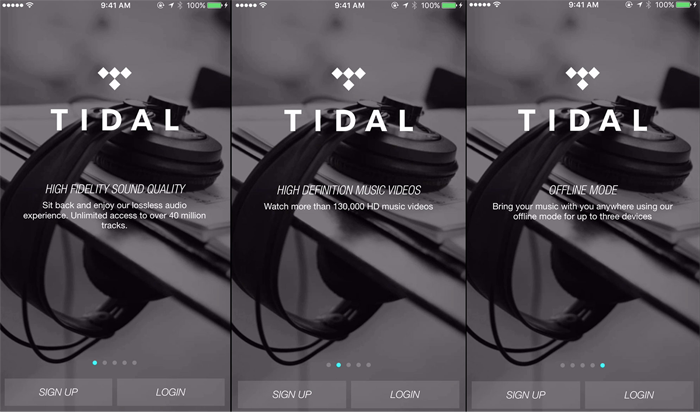
A user who opens the app for the first time immediately knows what the app offers: sound quality, high definition music videos, and offline mode.
The features approach to app onboarding is especially useful for apps that have complex functionality.
It’s a good idea to communicate core features by using less text and more visuals. This makes it easier for users to understand how the app functions.
App Onboarding Flow 3: Action-Oriented Approach
The action-oriented approach makes people use your app during onboarding instead of just telling them about its value or features.
This onboarding flow is especially useful for apps that rely on user-generated content (UGC). If you want users to take action, you have to encourage them.
For example, social media platform Tumblr offers an action-oriented onboarding experience to new users with a simple call to action in a new user’s main feed.
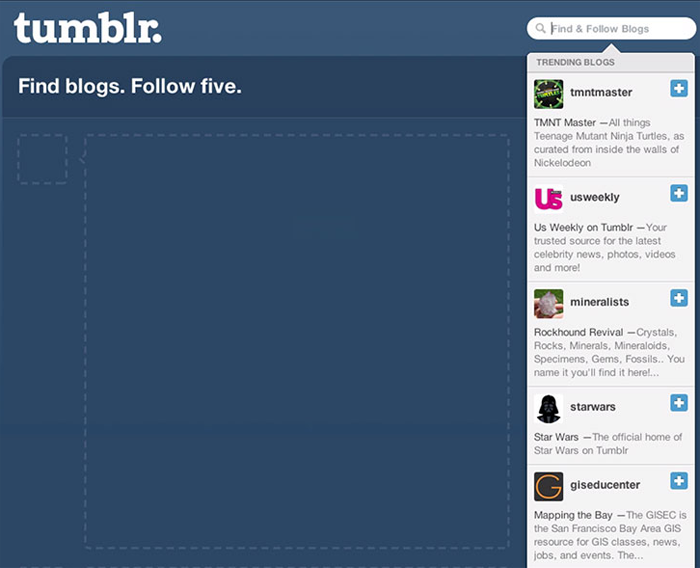
As soon as a user signs up, Tumblr makes effective use of her blank feed to prompt action: “Find blogs. Follow five.” This advice encourages the user to start engaging with the platform
But Tumblr doesn’t stop there. Once the new user follows 5 blogs, the app prompts her to take another step: “Tell us about yourself.”
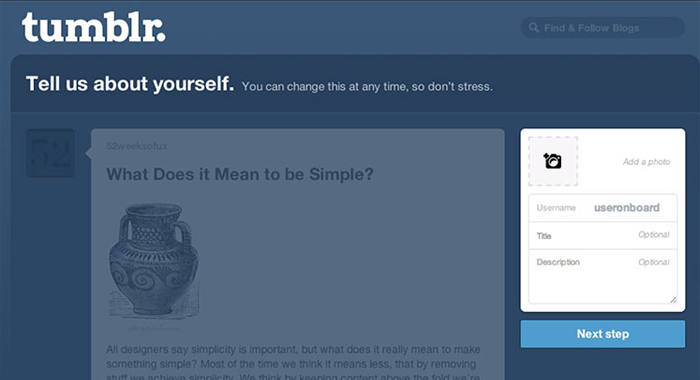
This step encourages users to upload a picture, title, and description of themselves. Notice how Tumblr allows users to skip to the next step if they do not want to provide this information.
Another example of an action-oriented onboarding flow comes from PayPal.
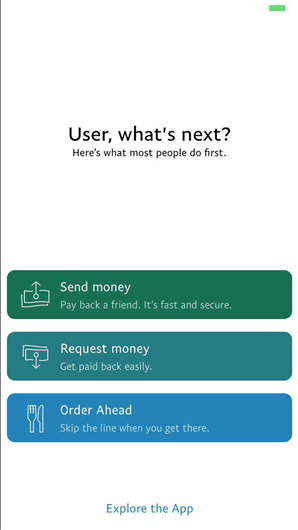
After a new app user signs up, PayPal shows the most common actions to take within the app: send money, request money, order ahead.
This encourages users to engage with the app instead of closing it.
App Onboarding Flow 4: Account Setup Approach
The account setup onboarding flow focuses on getting new users to register and set up an account before they proceed to use your app.
This works well for apps such as, social media or messaging apps, that require users to make an account if they want to access app features.
WhatsApp onboards new users by walking them through a simple account setup process

The social messaging app starts off by asking for device permissions and includes brief explanations of why it needs access.
Telling users why your app needs a certain device permission alleviates concerns about security and builds trust. You want to avoid scaring away new users by coming across as too intrusive.
Next, WhatsApp proceeds to verify the new user’s phone number to set up an account.
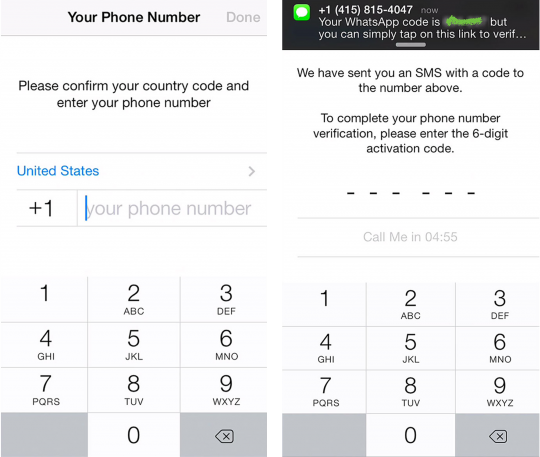
Notice how simple Whatsapp keeps the entire process, providing step-by-step instructions and explanations at every stage of app onboarding.
Once users are done verifying their phone number, WhatsApp takes them to another screen to set up their optional profile picture and account name.
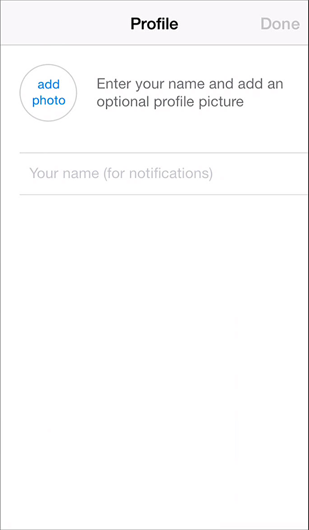
Now, with an account set up, users can begin using the app.
Remember, endless forms and input fields frustrate people and drive them away. The more effort you ask of your new users, the less likely they will be to stick around.
The key to an effective account setup onboarding flow is to keep it as simple, easy, and fast as possible.
App Onboarding Flow 5: Interactive Approach
Instead of having a one-way conversation with your app users, let them actively participate in the onboarding process itself by employing the interactive app onboarding flow.
The interactive approach can have users:
- Interact with your app’s features
- Learn about your app getting
Gamifying your mobile app onboarding process is an example of the interactive approach.
Lookout, a mobile security app, gets new users acquainted with its app with a short, interactive quiz
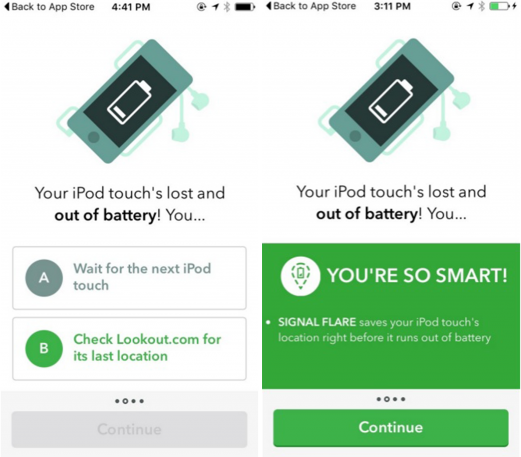
And if you choose the wrong answer, Lookout incorporates explanations of app features into your quiz score.
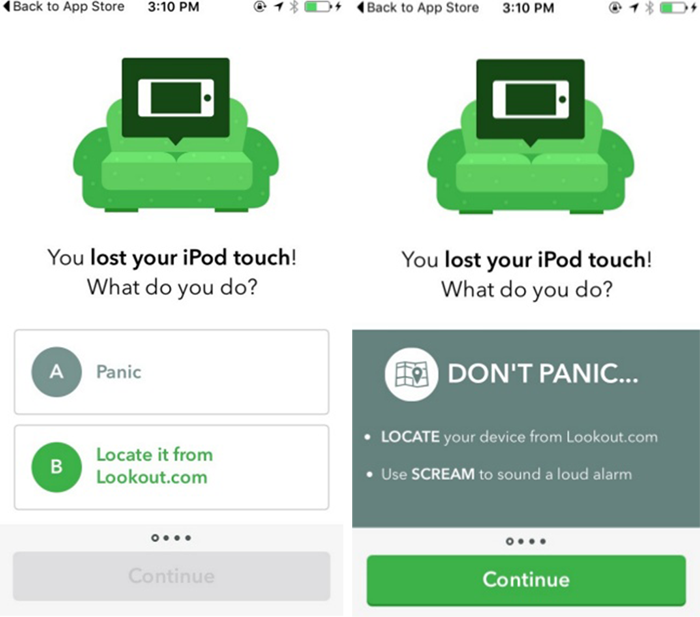
Lookout not only makes its interactive onboarding process fun and engaging for its users but also helps them understand how to use the app.
The news app Quartz also uses an interactive onboarding flow by having a two-way conversation with its users using a messaging feature.
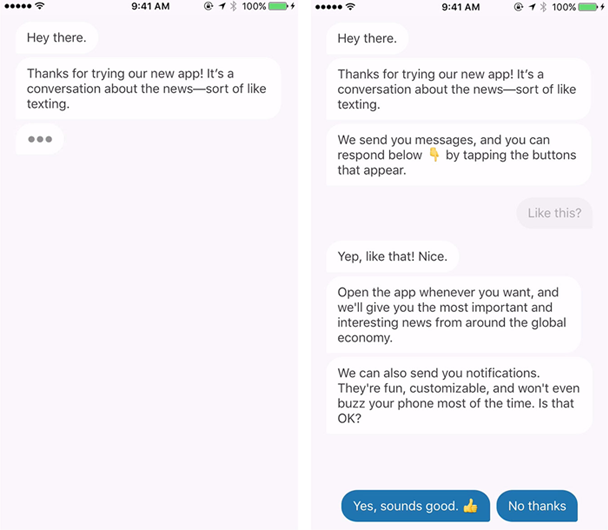
The app not only introduces itself but also delivers a human-like experience with its conversational style, emojis, and typing dots.
App Onboarding Flow 6: Combination Approach
Most apps use a combination of multiple onboarding approaches to engage new users.
For example, it’s possible to communicate both benefits and features to your users during the onboarding process.
B2B website analytics platform Leadworx adds an interactive and action-oriented twist to the account setup process in its onboarding flow.
It starts with a simple signup form.
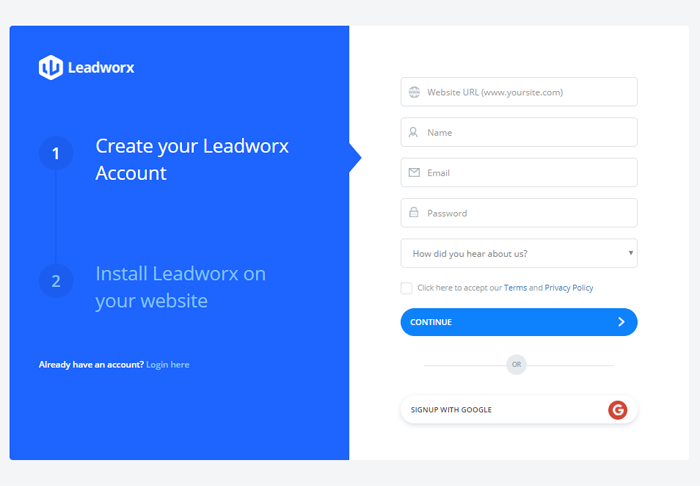
Next, it prompts the app user to take action and install its script on her website.
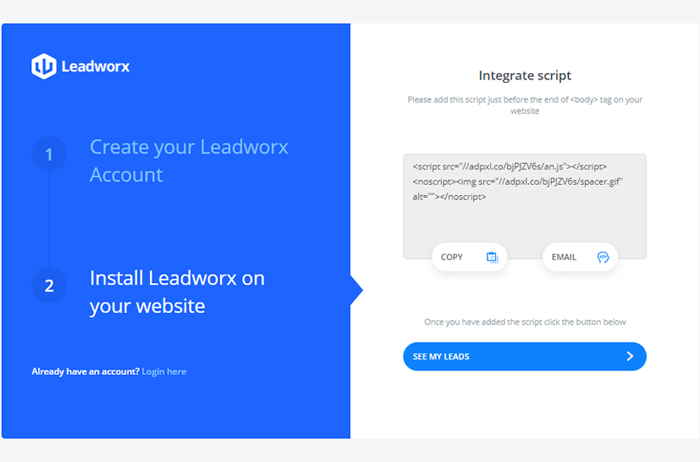
Finally, Leadworx guides the user to personalize the service by incorporating interactive screens for selecting preferences.
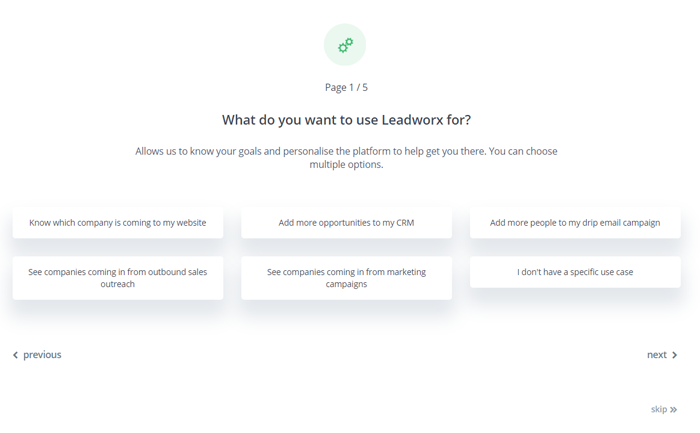
The Leadworkz example demonstrates you can always mix and match different onboarding flows to create one that works best for your app.
App Onboarding Best When It’s Simple and Easy for App User
The important thing to remember is to make the app onboarding process simple and easy for users, and get them to engage with you naturally.
Check out more examples of successful onboarding flows used by brands for inspiration.
